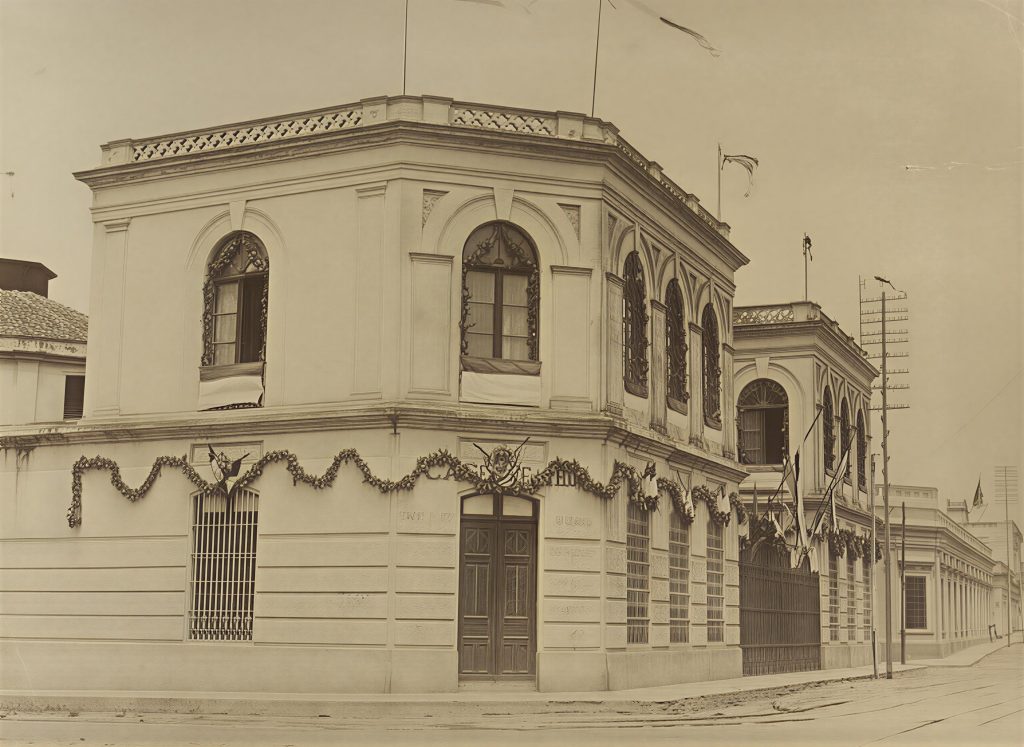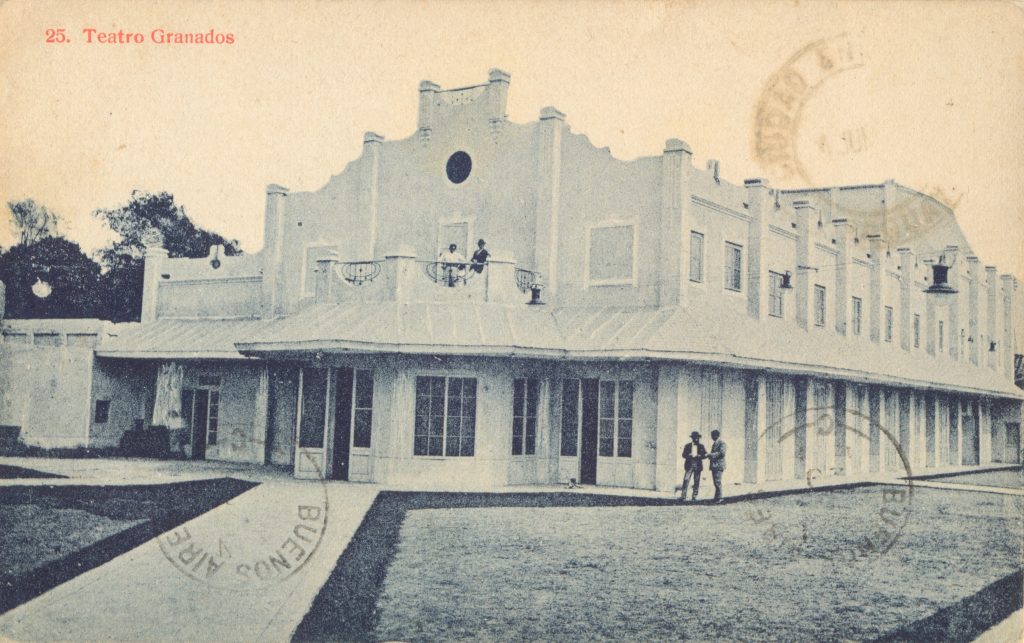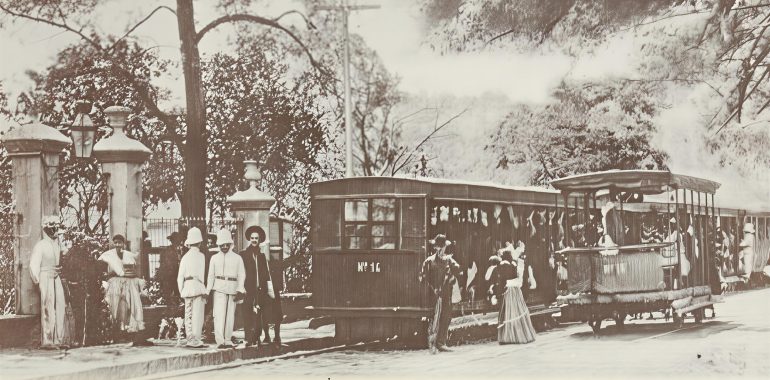Asunción is a vibrant city, particularly in terms of cultural activity. People can see traditional handicrafts, dance, and music linked to the country’s indigenous history. Both locals and visitors can also attend concerts and plays held in multiple theatres throughout Asunción, Paraguay’s largest city.
The country and its capital have a rich tradition of expressing pride, history, and cultural identity through theatrical performances staged in numerous venues across the city. Let us take a brief look at the history of theatres in Asunción.
Theatrical performances during the colonial era
The history of theatre in Asunción began long ago. In the early days, performances were held outdoors — mainly in central squares (plazas) in front of churches, as colonial settlements were typically designed around these spaces. These public areas served as stages for religious plays, dances, and other performances. Jesuit estates also had spacious grounds suitable for hosting such events.
At the time, theatrical activity was not highly developed, and progress was slow. Without financial support from local authorities, artistic advancement was limited. As Asunción grew into a proper city, plays were performed in what is now known as the Plaza de Armas. It was only towards the end of the eighteenth century that theatrical performances began to gain ground. However, the authorities soon repressed this progress. José Gaspar Rodríguez de Francia’s government halted theatrical activities, deeming them unnecessary in uncertain times.
Post-independence, the Triple Alliance, and the reconstruction era
For centuries, leaders have sought entertainment, and Carlos Antonio López was no exception. Without him, Asunción would not have a municipal theatre. During his diplomatic tour of Europe, López hired Alejandro Ravizza, an Italian architect, and Ildefonso Antonio Bermejo, a Spanish professor, playwright, and stage director.

They both worked on the construction of the theatre. Ravizza and Bermejo arrived in early 1855, and the building was inaugurated on López’s birthday, 4 November of the same year. The theatre stood very close to the current one.
After the War of the Triple Alliance, it was time to rebuild Asunción and Paraguay. As in many nations recovering from war, leaders did not prioritise the reconstruction of cultural institutions. In 1886, the government granted Baudillo Alió permission to use the old Plaza Libertad to build a new theatre. The Catalan architect used this space — also known as Plaza Chica — to create the cultural venue that would redefine the capital.
They first named the theatre “Politeama Paraguayo”, but soon renamed it to enhance its prestige. It opened on 21 July 1889. Following Alió’s death in 1892, the theatre became municipal property.
The evolution of theatres after the war
The Municipal Theatre Ignacio A. Pané was not the only venue operating at the time. Carlo Bellissoni built the Teatro Olimpo on Palma Street, between Convención and Ayolas, in the area where the Palmaroga Hotel now stands. Teatro Olimpo opened in February 1887. Teatro Andreuzzi, founded by Antonio Andreuzzi, also dates back to that era; today, the Hotel del Paraguay occupies the site. Another venue, the Alcázar Paraguayo – Jardín-Concierto, was founded by Félix Coulombié between 1889 and 1892. Although these theatres no longer exist, their history remains.

In the early 1900s, El Edén del Belvedere served as a theatre and event space. Located at the corner of Brazil and Spain Avenue, the venue later became the Goethe School, then the Business Administration School (EDAN), and now the Autonomous University of Paraguay (UAP). Even today, some residents still refer to the area as “Belvedere”. Founded in 1916 at the corner of Estrella and 14 de Mayo, Teatro Granados became one of the period’s notable venues. It later served as a cinema and now accommodates a financial company.
In the 1940s, Asunción’s main theatre was not called Teatro Municipal but rather Teatro Nacional. In 1945, the government ruled that only the Club Nacional football club could use that name. To formalise its identity, the theatre was renamed in 1949 to honour Ignacio A. Pané — a sociologist, teacher, journalist, poet, and politician who had become a pillar of the community.
Today, the Municipal Theatre is the oldest surviving theatre in Asunción and remains an active venue for artistic performances of all kinds.
Theatres under the Stroessner regime
During Alfredo Stroessner’s dictatorship, theatre, like other artistic expressions, was subject to censorship and strict control. The regime turned theatre into a vehicle for propaganda, suppressing many independent works with social themes. It required approval for every production and could cancel plays without offering any explanation. The year 1975 was one of the most difficult for theatre in Paraguay: the dictatorship censored and cancelled performances of “San Fernando” by Alcibiades González del Valle.
Furthermore, although the Guaraní language had been widely used in theatrical productions, it was completely banned during this period, as the regime associated the language with the lower classes.
The theatrical scene today
Since 1989, when the dictatorship fell, the theatrical landscape has improved significantly. Plays have regained an important place in the hearts of Asuncenos (people of Asunción), and theatres have opened across the city. The situation is not perfect, but it is undoubtedly moving in the right direction.
Today, theatres stage at least one major play each week. Productions appear in Spanish, Spanglish, Jopara (a blend of Guaraní and Spanish), Guaraní, and Portuguese. La Recova, an intimate venue near the Presidential Palace, is especially known for staging Paraguayan historical works, many performed in Guaraní. Most theatres (though not all) have around one hundred seats, and ticket prices average Gs. 50,000 (around US$7).
With Paraguay’s rich sociocultural and sociopolitical history on display at least one night per week, and at an accessible price, the real question is: when will you go?
With the collaboration of Sol Orrabalis, another writer of The Asunción Times.
Check out this comprehensive list of Asunción’s Theatres: A guide to plays, orchestras, and cultural hotspots.


